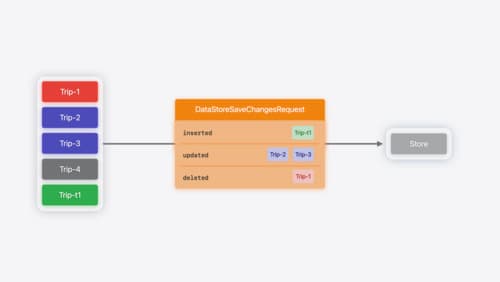how to use diffable data source
Asked on 2024-09-06
1 search
To use a diffable data source, you would typically be working with a collection view or table view in iOS. However, the context provided from the WWDC sessions does not specifically cover diffable data sources. Instead, it focuses on SwiftData, a framework introduced to help with data modeling and persistence across Apple's platforms.
If you're interested in learning more about SwiftData, you might want to check out the session titled "What’s new in SwiftData" which covers various features like customizing the schema, using the history API, and creating custom data stores. You can start with the Adopt SwiftData chapter to get an overview of how to integrate SwiftData into your app.
For more specific information on diffable data sources, you might want to look at other resources or sessions that focus on collection views and table views in iOS development.

What’s new in SwiftData
SwiftData makes it easy to add persistence to your app with its expressive, declarative API. Learn about refinements to SwiftData, including compound uniqueness constraints, faster queries with #Index, queries in Xcode previews, and rich predicate expressions. Join us to explore how you can use all of these features to express richer models and improve performance in your app. To discover how to build a custom data store or use the history API in SwiftData, watch “Create a custom data store with SwiftData” and “Track model changes with SwiftData history”.

Create a custom data store with SwiftData
Combine the power of SwiftData’s expressive, declarative modeling API with your own persistence backend. Learn how to build a custom data store and explore how to progressively add persistence features in your app. To get the most out of this session, watch “Meet SwiftData” and “Model your schema with SwiftData” from WWDC23.

Platforms State of the Union
Discover the newest advancements on Apple platforms.
